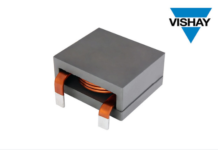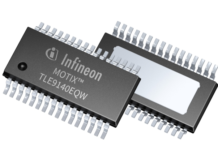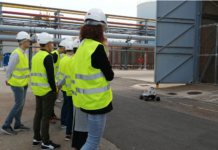
It’s hardly new information that technology can significantly impact our everyday lives and how we do our jobs.
However, not every industry has fully embraced the power of tech. That might be out of fear of the unknown, or because they don’t fully understand how it might be able to streamline their business and open new avenues for growth. One industry on the precipice of a tech revolution is transport.
In this article, we’ll outline how fleet companies can become more efficient through the use of innovative technology, whether they were designed with long distance delivery in mind or not.
Highlighting room for improvement
A good business owner knows there’s always room for improvement. Things might be looking up now, but a new competitor or industry revolution could throw the entire operation out of synch.
Obviously, you should be looking for Powerful Tools for Balanced Scorecard Implementation, as well as other great tech that can help you make improvements, but also highlight areas requiring it.
One of the biggest developments in fleet management in the last few decades has been in-depth vehicle tracking through telematics. This insight into how drivers are traveling has improved business efficiency across the industry, not just by giving live updates to vehicles, but in how it offers substantial data to review afterwards.
These telematics tools are commonplace among fleet businesses now. If you are not already using them, they are a worthwhile investment that can be used alongside route planning software, helping you to avoid frustration and dead time on the road.
Through the use of telematics tools you can notice everything from consistently unproductive routes to which drivers are taking unwarranted breaks. It’s a brilliant way to notice cracks in your business and devise a training program for future drivers and fleet operators.
Keeping people connected
If a year of Zoom calls has taught us anything, it’s the power and importance of communication.
If your business can’t keep constant channels of communication open between staff, it runs the risk of creating a confused and inefficient workplace. Poor communication has been linked to everything from diminishing productivity to high turnover and stress in the workplace.
Fortunately, simple tech innovations provide some intuitive ways to solve this problem.
We’ve already spoken about the importance of telematics technology for keeping your drivers in touch with one another and fleet control teams. However, you also need to consider how the rest of the business is staying in touch.
There are lots of tools out there to streamline office communication that aren’t necessarily built for the transport industry, but still highly effective. Take tools such as Discord and Slack for example. While more commonly used in traditional office-based businesses, there is no reason your admin teams can’t open clear lines of communication with fleet managers through one of these tools. It’s a much faster method than relying on sluggish emails.
Taking safety seriously
Many business owners look at health and safety measures as a hindrance to efficiency and productivity, even if they accept they are necessary. However, health and safety tech innovations might just be a great way to avoid more significant headaches down the road.
Wearable tech, in particular, is a convenient way to ensure your drivers are healthy and highlight any potential issues that may crop up.
While sensory technology is already being used to monitor the health of vehicles, apps can offer a similar service to the drivers.
Apps such as Fuell are designed to monitor driver awareness and stress levels as well as the duration and quality of their sleep within the last 24 hours. This doesn’t just ensure they’re not falling asleep at the wheel or potentially frustrating themselves into a dangerous situation, but it provides employers with significant data to help identify risks and patterns across their fleet to develop more efficient long-term journeys.
Another issue to consider is the risk of theft. While not necessarily thought of as an efficiency matter, theft can halt the growth of your business and require extensive funds to correct, even if you have insurance. The integration of facial-recognition software can stop your vehicles being at risk of theft, ensuring that goods and business tools are protected on top of drivers.
All fleet managers should be taking better notice of these potential risks to ensure the safety of their staff and provide the more secure (and thus, productive) working environment.
In the 2020s, true efficiency embraces technology in good measure.
There are so many brilliant digital tools out there you can use to your advantage, that it puts your business at a significant disadvantage to not be using them. These are just a few examples that are prescient across the transport industry. It’s important to find what works for your business in particular and amass useful tools from there.



















